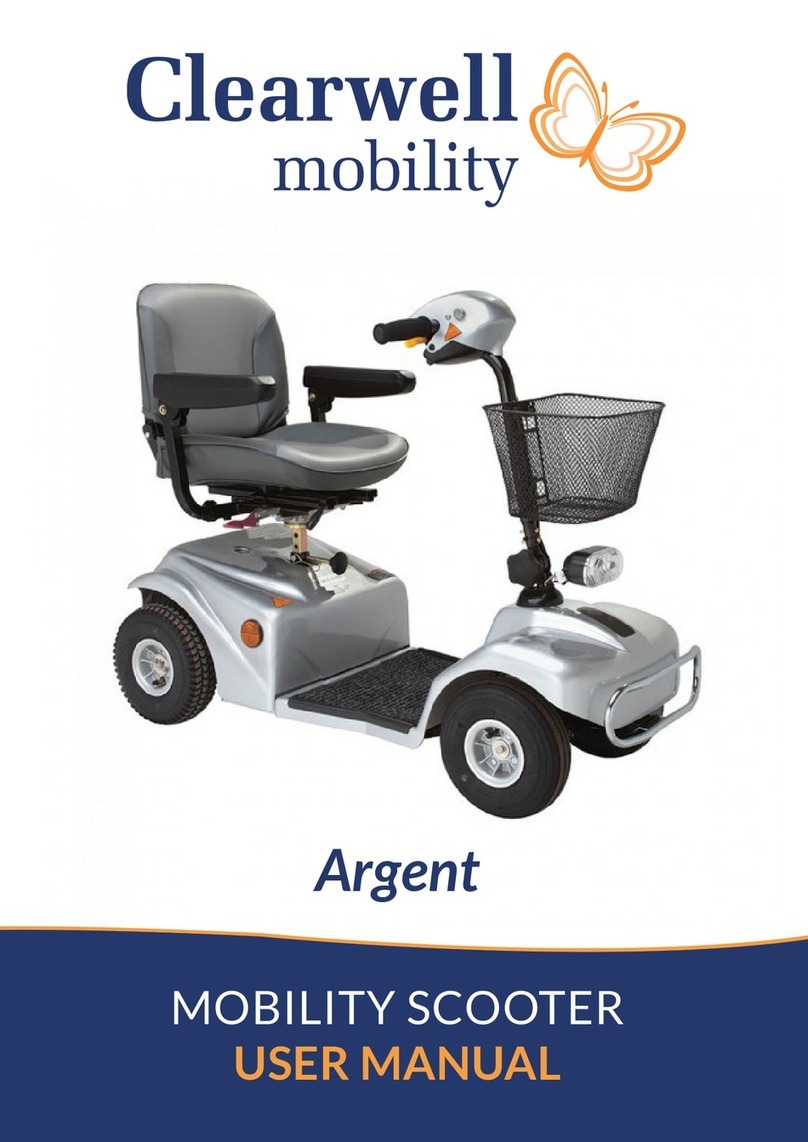
@clearwellmobility @clearwellmob 9
Simple Maintenance
Maintenance should only be carried out by a qualied engineer.
You should check the following before each journey:
1. Visually check the tyres for damage.
2. Check the steering moves freely.
3. The tiller knob is tight.
4. The seat is located correctly and locked.
5. Check the armrests are secure.
6. Batteries are fully charged.
7. The front basket is secure.
Circuit Breaker
There is one button for the circuit breaker (located on the battery pack) if the power
switch is 'ON' and the battery gauge does not move, it is possible an electric current has
overloaded the scooter. Reset the circuit breaker by pressing this button.
Anti-tip Wheels
These are factory tted and should not be removed. The anti-tip assembly is bolted
to the rear frame of the scooter. Never use the scooter without the anti-tip wheels
tted.
Inspecting Tyres
The condition of the tyres depends on how you drive and use your scooter.
Please check the tread depth regularly. Replace the tyres when the tread depth is less
than 0.5 mm.
Important- Possible Faults
As you get used to your vehicle you will get a feel for how it behaves. If something feels
unusual, for instance the vehicle does not accelerate or brake smoothly, the brakes are
not holding on a slope or the steering feels different; contact Clearwell immediately
and explain to an engineer what the problem is, as this will help diagnose the problem.
Cleaning the Scooter
Ensure the controller is switched off before cleaning.
The scooter should be wiped over once per week with a slightly damp (not wet) cloth.
Make sure to dry thoroughly after cleaning.
IMPORTANT: Do not use a hose or pressure or steam washer to clean your scooter.
Cleaning the Control System
Clean the control system and the keypad with a cloth dampened with diluted detergent.
Be careful not to use excessive water or force when cleaning the control keypad.
Simple Maintenance

































